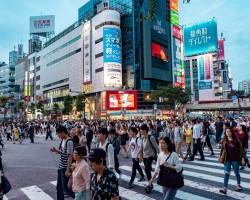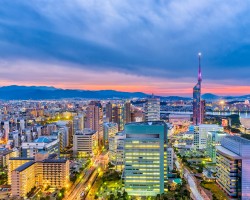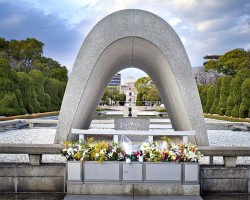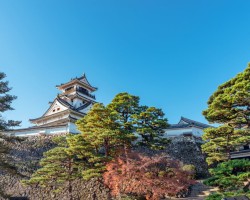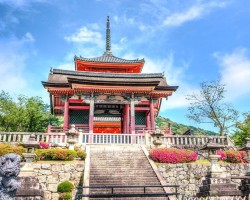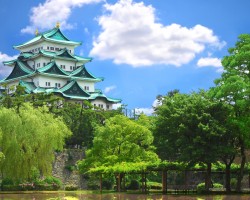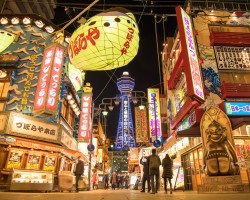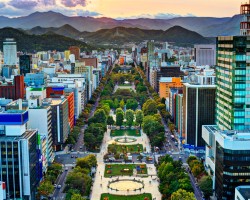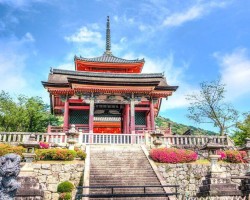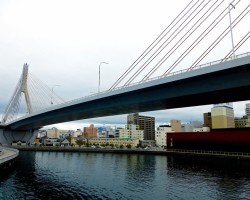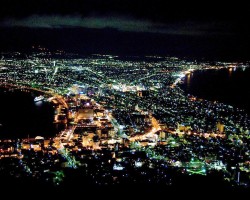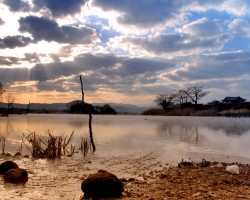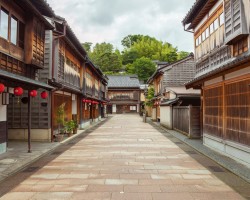Best time to go to Japan for a perfect weather and where to go?
When is the best time to go to Japan?
It is difficult to give a specific time to travel to Japan because the climate varies from one island to another. However, the best time to visit Japan is often during spring, in the months of April and May. During this period, you can enjoy mild weather with gentle temperatures throughout the country. Additionally, spring is also the ideal season to admire the cherry blossoms.
However, this season is very popular for travel both among the Japanese and tourists. Therefore, it is necessary to plan your travel budget accordingly and book your tickets well in advance.
Moreover, summer corresponds to the rainy season in Japan. This period is less popular due to the heat and high humidity. However, some regions like Hokkaido Island, with drier weather, remain favorable for tourist visits in summer.
On the other hand, the weather conditions are also very favorable for a stay in Japan in autumn. It is a pleasant season with little rain and mild temperatures. You can admire the colors of autumn foliage that enhance the landscapes, especially around Kyoto.
Finally, if you are wondering when to go to Japan to experience less tourist crowds, you can travel in winter. Indeed, Japan has beautiful ski resorts like Sapporo or Nagano. While the weather conditions may be harsh, you can enjoy this charming country in a quieter atmosphere.
Where and when to go based on the weather?
Chūbu
Nagoya, Kanazawa, Nagano...
Chūgoku
Hiroshima, Okayama, Izumo...
Hokkaidō
Sapporo (Hokkaido), Hakodate, Abashiri...
Kansai
Osaka, Kyoto, Kobe...
Kantō
Tokyo, Hakone, Nikko...
Kyushu
Fukuoka, Kagoshima (Kyushu), Nagasaki...
Ogasawara
Ogasawara Islands...
Okinawa
Naha, Nago, Miyakojima...
Shikoku
Kochi, Tokushima, Takamatsu...
Tōhoku
Sendai (Honshu), Aomori, Akita...
To get all the information about the climate and weather in Japan for a specific month, click on the corresponding link below:
Japan in january Japan in february Japan in march Japan in april Japan in may Japan in june Japan in july Japan in august Japan in september Japan in october Japan in november Japan in december
Best time to travel to Japan by cities
Climate and Weather in Japan
In general, Japan, neighboring China, Korea, and Russia, benefits from a temperate and rather pleasant climate. However, this country stretches over nearly 3000 kilometers long and includes numerous islands.
Thus, Japan's weather experiences great variations in climates from one region to another. Indeed, the weather can be cold and dry in the extreme north while it can be hot and humid in the south.
However, overall, Japan's climate is considered quite humid, due to numerous rainy episodes.

Climate of Northern Japan
Northern Japan includes Hokkaido Island, a region close to Russia and the Asian continent.
This area experiences hot summers, but particularly long and cold winters. Indeed, especially around Sapporo, there are heavy snowfalls from December to February.
Due to its proximity to Siberia, northern Japan experiences episodes of intense cold with temperatures often below zero. For example:
- temperatures range between -5 and 2 °C on average in the city of Wakkanai
- they average -7 to 0°C in winter in Sapporo.
Moreover, from April to October, the climate is relatively sunny but temperatures remain cool in April-May (between 3 and 12 °C). Showers are also frequent.
Summer temperatures are around 20 °C and the months of July-August are quite rainy. However, Hokkaido Island is less affected by the summer monsoon than the rest of Japan. It is actually the least rainy area in the country.
Finally, the northern part of Honshu Island has a fairly similar climate to Hokkaido Island. Indeed, the Tohoku region, such as Aomori, experiences icy winters and heavy snowfall in winter. The months from May to September are cool but sunny, with some showers in summer.
Climate of Central Japan
Central Japan, located in the heart of Honshu Island, has a hot and very humid climate, notably due to the presence of large ocean currents. The west-central part of the island is known to be one of the rainiest areas in Japan.
Indeed, rainfall is abundant even in winter because the island is affected by the northwest monsoon.
For example, in Kyoto:
- over 200 mm of precipitation in July
- nearly 100 mm in February and March
- it rains 10 to 15 days per month on average between December and September.
In this region, summers and winters are rather short, and temperatures are always relatively pleasant. There is an average of 5 to 10 °C in winter and 25 to 30 °C in summer in Tokyo.
Moreover, from June to October, swimming is pleasant in Shingu, on the side of the Kumano Sea. Indeed, the sea temperature ranges between 23 and 27 °C during this period.
Finally, spring is a mild season on site where you can admire the numerous cherry blossoms.
Autumn is also a recommended season for a trip. In Osaka, for example, temperatures range between 18 and 29 °C between September and October.
Climate of Southwest Japan
Southwest Japan, around the cities of Hiroshima, Fukuoka, and Nagasaki, has a hot and humid climate. The weather varies compared to the center of the archipelago as it experiences milder temperatures but more intense rainfall.
Indeed, the Kii Peninsula, the north of Shikoku Island, and western Kyushu are particularly rainy regions.
Generally, rainfall is more frequent in summer due to the presence of tropical air from the Pacific Ocean.
The wet season lasts about a month, starting from mid-June. It is worth noting that 80% of annual precipitation occurs during this period.
For example:
- in Nagasaki, it rains about 150 mm per month all year round and up to 400 mm in June and July.
- in Hiroshima, it rains 10 days or more per month all year round and about 220 mm in June and July.
This period is also the typhoon season, which brings strong winds and torrential rains. Indeed, Japan is affected by several cyclonic phenomena each year, especially during the months of August and September. Although preventive measures are in place, the damage is often significant.
Despite the humidity, the climate in southwest Japan is relatively pleasant. For example, the temperature is around 5 to 10 °C in winter and 22 to 30 °C in summer in the city of Hiroshima.
Overall, the weather is quite sunny from spring to autumn. As the precipitation falls in the form of passing showers, the sun quickly returns. Thus, the weather is favorable for a trip from April to November, although summer should be avoided.
Temperatures and rainfall in Japan
On these 3 graphs, we present the evolution of temperatures of Japan and month-by-month rainfall for the cities of Tokyo, Fukuoka, Hiroshima, Kochi and Kyoto, as well as the month-by-month sea temperature for coastal cities.
Peak visitor numbers and tourist seasons in Japan
Find out when Japan has its high tourist season (the period when the influx of tourists is highest) and off-peak tourist season using our data and figures.
Tourist seasons in Japan
The months with low numbers of tourists are: January, February, March and June. The number of visitors to Japan is high in: April, May, July, August, September, October, November and December.
- Very low season in Japan: January.
- Low season in Japan: February, March and June.
- High season in Japan: April, May, July, September, November and December.
- Peak season in Japan: August and October.
Figure: Visitor index for Japan month by month
Average price for flights to Japan
A return flight between Los Angeles and Tokyo is generally cheaper if you go in february ($ 779 on average): this is the best time for travellers on a tight budget. In contrast, you may end up paying $ 516 more for your airline ticket to Tokyo if you go in july.
Where to go in Japan?
This table allows you to see the maximum temperature for each city and our opinion on the weather month by month (see colour legend below the table).
| Cities | jan. | feb. | mar. | apr. | may | jun. | jul. | aug. | sep. | oct. | nov. | dec. |
| Tokyo | 11°C | 11°C | 15°C | 19°C | 24°C | 26°C | 30°C | 32°C | 28°C | 23°C | 18°C | 13°C |
| Fukuoka | 10°C | 11°C | 14°C | 19°C | 23°C | 26°C | 30°C | 31°C | 28°C | 23°C | 18°C | 12°C |
| Hiroshima | 8°C | 10°C | 14°C | 18°C | 24°C | 26°C | 30°C | 31°C | 28°C | 23°C | 17°C | 10°C |
| Kochi | 11°C | 12°C | 15°C | 19°C | 23°C | 26°C | 29°C | 31°C | 28°C | 24°C | 18°C | 13°C |
| Kyoto | 7°C | 9°C | 13°C | 18°C | 24°C | 27°C | 30°C | 32°C | 28°C | 22°C | 16°C | 10°C |
| Nagoya | 8°C | 10°C | 14°C | 19°C | 25°C | 28°C | 31°C | 34°C | 29°C | 24°C | 17°C | 11°C |
| Osaka | 9°C | 10°C | 14°C | 19°C | 25°C | 28°C | 31°C | 33°C | 29°C | 24°C | 18°C | 12°C |
| Sapporo (Hokkaido) | -3°C | -3°C | 1°C | 9°C | 17°C | 21°C | 25°C | 25°C | 21°C | 14°C | 6°C | -1°C |
| Abashiri | -3°C | -3°C | 2°C | 8°C | 15°C | 19°C | 23°C | 24°C | 21°C | 14°C | 7°C | -0°C |
| Akita | 3°C | 3°C | 7°C | 12°C | 18°C | 22°C | 26°C | 28°C | 24°C | 18°C | 12°C | 6°C |
| Aomori | 1°C | 1°C | 5°C | 11°C | 17°C | 22°C | 25°C | 27°C | 23°C | 17°C | 11°C | 4°C |
| Hakodate | 1°C | 1°C | 4°C | 9°C | 14°C | 18°C | 22°C | 24°C | 22°C | 16°C | 10°C | 4°C |
| Hakone | 10°C | 11°C | 14°C | 18°C | 23°C | 25°C | 29°C | 31°C | 27°C | 22°C | 18°C | 12°C |
| Izumo | 7°C | 9°C | 12°C | 16°C | 21°C | 25°C | 28°C | 30°C | 26°C | 21°C | 16°C | 10°C |
| Kagoshima (Kyushu) | 12°C | 14°C | 16°C | 20°C | 24°C | 26°C | 30°C | 31°C | 29°C | 25°C | 19°C | 14°C |
| Kanazawa | 6°C | 7°C | 10°C | 15°C | 21°C | 24°C | 28°C | 30°C | 26°C | 21°C | 15°C | 9°C |
| Kobe | 9°C | 10°C | 14°C | 18°C | 23°C | 26°C | 30°C | 32°C | 28°C | 23°C | 17°C | 11°C |
| Miyakojima | 21°C | 21°C | 22°C | 24°C | 26°C | 29°C | 30°C | 30°C | 29°C | 27°C | 25°C | 22°C |
| Nagano | 3°C | 4°C | 9°C | 15°C | 22°C | 25°C | 29°C | 30°C | 25°C | 19°C | 13°C | 6°C |
| Nagasaki | 11°C | 12°C | 15°C | 19°C | 22°C | 25°C | 28°C | 30°C | 28°C | 24°C | 18°C | 13°C |
Legend:
good weather
tolerable weather
bad weather
very bad weather
About Japan
What can I do in Japan?
Beaches / swimming
Nature and countryside
Culture and heritage
Sports
Family travel
Crafts / shopping
Gastronomy
Nightlife
Is this weather information for Japan reliable?
Climate data for Japan has been gathered every day since January 2009. The analysis of these meteorological data for Japan allows us to determine the average for each month in Tokyo, Fukuoka, Hiroshima, Kochi, Kyoto, Nagoya, Osaka, Sapporo (Hokkaido), and 124 other cities.
So yes: this data is reliable except in cases of temporary climate disruption in the region.
